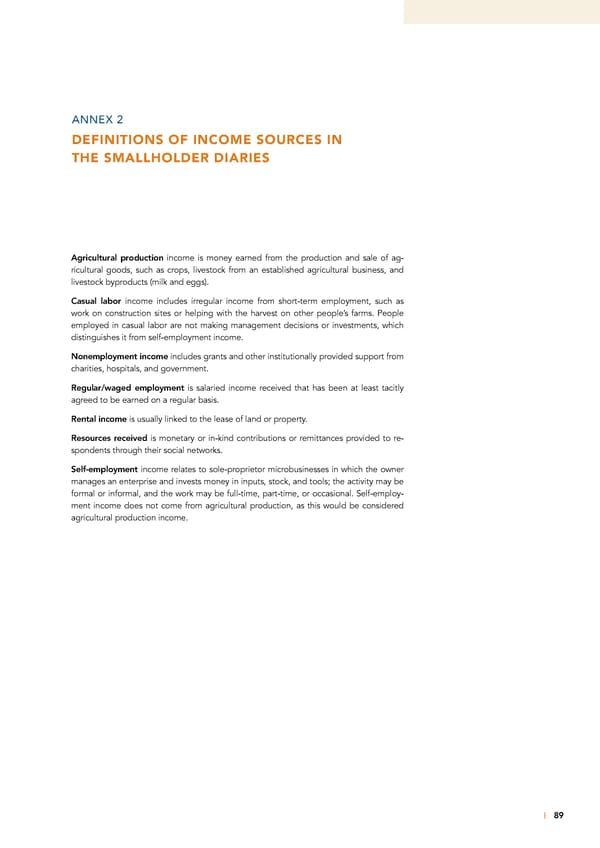ANNEX 2 DEFINITIONS OF INCOME SOURCES IN THE SMALLHOLDER DIARIES Agricultural production income is money earned from the production and sale of ag- ricultural goods, such as crops, livestock from an established agricultural business, and livestock byproducts (milk and eggs). Casual labor income includes irregular income from short-term employment, such as work on construction sites or helping with the harvest on other people’s farms. People employed in casual labor are not making management decisions or investments, which distinguishes it from self-employment income. Nonemployment income includes grants and other institutionally provided support from charities, hospitals, and government. Regular/waged employment is salaried income received that has been at least tacitly agreed to be earned on a regular basis. Rental income is usually linked to the lease of land or property. Resources received is monetary or in-kind contributions or remittances provided to re- spondents through their social networks. Self-employment income relates to sole-proprietor microbusinesses in which the owner manages an enterprise and invests money in inputs, stock, and tools; the activity may be formal or informal, and the work may be full-time, part-time, or occasional. Self-employ- ment income does not come from agricultural production, as this would be considered agricultural production income. | 89
 Financial Diaries with Smallholder Families Page 106 Page 108
Financial Diaries with Smallholder Families Page 106 Page 108